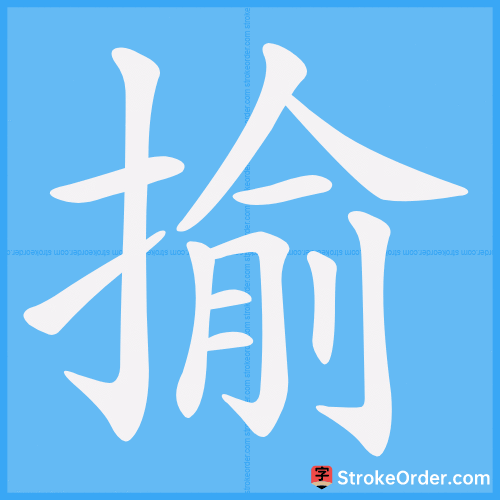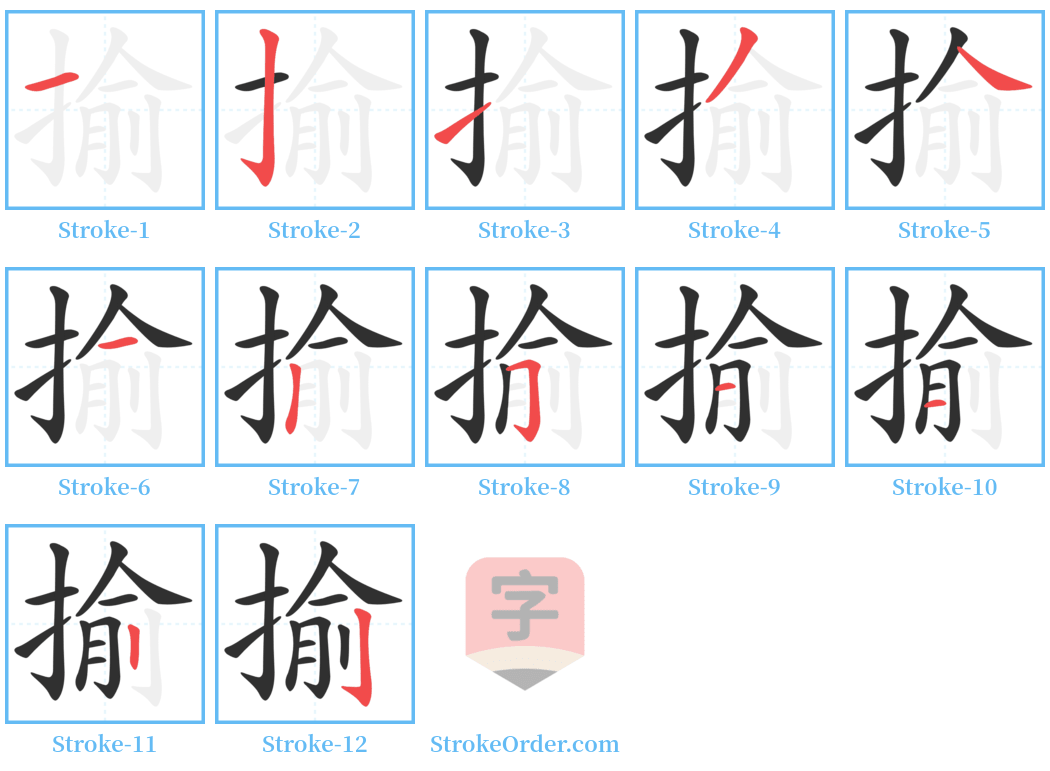揄 Stroke Order
Animated Stroke Order of 揄

Stroke Order Diagrams for 揄

Step-by-Step Handwriting Guide for 揄

Learn to Write Chinese Characters with Video Tutorials
Watch the video of writing the Chinese character "揄", learn the correct stroke order (笔顺) of the character "揄", and master the standard way of writing the character "揄".
Free Printable Handwriting Practice with Stroke Order: 揄
Printable Writing Practice Worksheet of "揄" in Portrait Orientation (Tian Zi Ge)

Printable Writing Practice Worksheet of "揄" in Landscape Orientation (Tian Zi Ge)

Information of 揄
Pinyin
yú
Radical
扌
Strokes
12 strokes
Usage
★★★★
Definition
draw out / let hanging
揄 [yú]
Verb
1. 〔~扬〕a. To promote, to propagate, such as in the phrase "揄扬大义" (to promote righteousness); b. To praise, to commend, such as in "极口揄扬" (to lavish praise).
1.a. To promote, to propagate.
1.b. To praise, to commend.
2. To pull, to draw.
2. To pull, to draw.
3. To tease or to provoke.
3. To tease or to provoke.
【本义】:引;挥动 - The original meaning is to pull or to wave.
【造字法】:形声。从手,俞声 - Etymology: it's a phono-semantic compound, combining the radical for 'hand' and the phonetic component '俞'.
Examples and References:
- "引也" (It means to pull) from 说文.
- In汉书·郊祀志, "神之揄临坛宇" describes a deity holding court.
- In庄子·渔夫, "被发揄袂" talks about waving sleeves.
- In韩非子, "御者因揄刀而劓美人" refers to a charioteer drawing a knife to harm a beauty.
- In孙膑兵法, it says: "鼓而坐之,十而揄之", indicating strategies of movement.
Another meaning involves taking out or offering:
- "使言之而非也,虽在卿相人君,揄策于庙堂之上,未必可用。" (Even a minister's strategy may not be applicable).
The character can also refer to teasing:
- For example, "揄弄" means to tease or playfully provoke and "揄揶" means to make fun of.
Additional Definition:
清理米臼,取出米臼中的米 (To clean the rice mortar and take out the rice) as seen in the Book of Songs.
See also: "揄狄".
Input Method for 揄
Pinyin
yu2
Wubi
rwgj
Cangjie
qomn
Zhengma
doqk
Four Corner
58021
Unicode
U+63c4
Same Pronunciation Characters